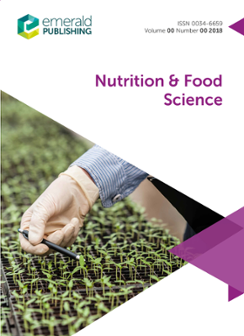Table of contents
POTENTIAL HEALTH BENEFITS OF FISH OILS
Tom SandersEssential fatty acid deficiency in animals is characterised by a poor rate of growth, an increased voluntary food intake and a scaly dermatitis. Linoleic acid (18:2n‐6) cures all…
A FISHY TALE
Cod liver oil is obtained from the livers of fish belonging to the species Gadus morrhua and other species within the family Gadidae. It is a completely natural triglyceride oil…
HEALTHY EATING — CATERERS' RESPONSE
Janet MockThe Manchester Polytechnic Food and Nutrition Unit organised a conference in February 1989 entitled The Response of the Catering Industry to the Challenge of Healthy Eating. One…
FAST FOOD — NUTRITIONAL ASPECTS
Alison Taylor, Simon JohnsonAs we pointed out in our first article in the May issue, the fast food market in the UK is expanding rapidly, and new fast food products are continually appearing in the high…
CHIPS
Nick JohnsTrading Standards Officers have no control over portion sizes of chips and these can vary widely. Fast food chains are able to sell relatively small portions to maximise their…
NEW LOOKS AT NEGLECTED LEGUMES
Nigel LambertPeas and beans are traditional UK crops well suited to the British climate. Compared with cereals, legumes are capable of fixing nitrogen, and hence do not require nitrogen…
BREEDING A BETTER DUCK
John PowellThere are two species of duck produced for the table: the common duck, Anas Platyrhynchos, which is the most popular and accounts for at least 95% of world production and the…
FOOD STUDIES WITH AN INTERNATIONAL FLAVOUR
Phillip BarloweThe School of Food Studies at Humberside College of Higher Education (hopefully soon to be designated Humberside Polytechnic) has, over the years, worked with industry to develop…

ISSN:
0034-6659Online date, start – end:
1971Copyright Holder:
Emerald Publishing LimitedOpen Access:
hybridEditor:
- Dr Vijay Ganji